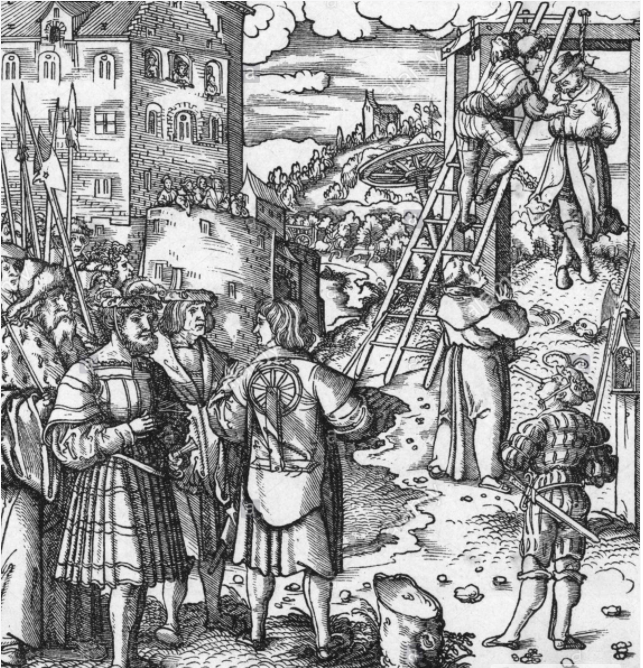Some unusual cases and executions in 16th and 17th century Edinburgh:

30th Jan 1603: Francis Moubray breaks his neck and dies escaping from Edinburgh castle. Next day was taken to gallows, hanged, quartered, beheaded, and displayed at the four city gates.
2nd July 1602: Alexander Rowan (ane cruel man) hanged for “setting ane woman’s bare arse on ane girdill quhen it wes red hot”
3rd July 1602: Johne Stewart beheaded for “cutting off ane man’s privat members”
1572: Christian Gudson, executed for biting off her husband’s finger
27th April 1601: For hanging a picture of the king and queen from a nail on the gibbet (to keep it off the ground), Archibald Cornwall hanged, gibbetted, and burnt.
13th May 1572: Two men and a woman hanged for bringing leeks and salt into Edinburgh without permission
20th February 1598: Thomas Dobie, for drowning himself in a quarry, he was hurled through town and hanged at the gallows.
16th June 1604: Robert Weir (for murder) was tied to a cartwheel and broken with the coulter of a plough.


